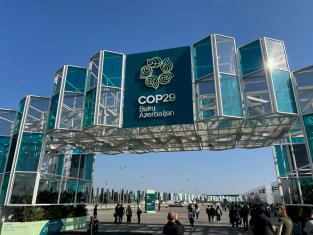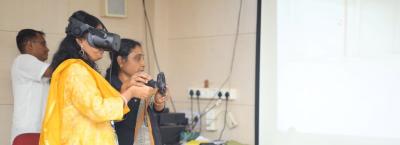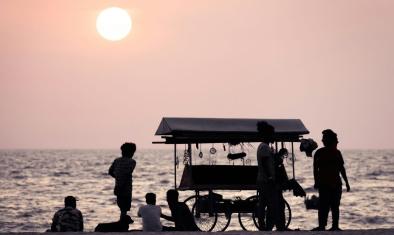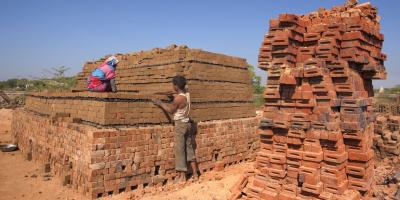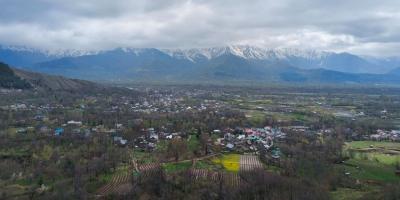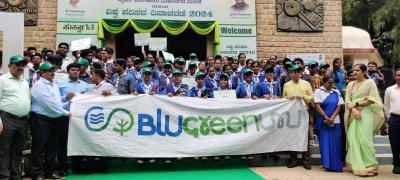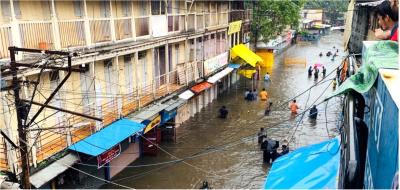Blogs
The blogs are part of WRI India’s mission to provide unbiased, expert analysis on the most important environmental issues facing the world today.
In today’s rapid-fire, fragmented information culture, we hope these insights will provide a measure of clarity to decision-makers worldwide.
-
Decoding Article 6 and Climate Finance Outcomes at COP29
by and -There were disappointments amid the headlines as the gavel came down on the United Nations Climate Change Conference, COP29, in Baku, Azerbaijan. COP29 did achieve some notable outcomes, particularly on Article 6 of the Paris Agreement, which lays out how countries can trade carbon credits to achieve their climate targets. Meanwhile, climate finance — 2024’s overarching theme — sparked intense debate over its sources and definitions. A headline figure was agreed upon, but developing nations were left seeking greater clarity and stronger commitments.
-
Virtual Reality Meets Sustainability: Empowering Workers Through Hands-On Training
by -India’s micro, small and medium enterprise (MSME) sector stands at a crossroads as industries rapidly adopt advanced technologies, like robotics and automation, while also transitioning to cleaner fuels and technologies to cut greenhouse gas emissions.
-
2024 in Data: Mapping People, Nature and Climate
by and -In the book “Klara and the Sun” solar-powered robots, also known as artificial friends (AFs) gently nudge and maneuver themselves by the store window to get their share of sunlight, a prime energy source. In the not-so-distant future (2030), it is projected that more than 40% of India’s population will be living in urban areas and will similarly jostle and compete for access to limited vital resources – food, water and opportunities.
-
Breaking the Mold: Transforming Bihar’s Brick Kilns
by , , and -As the November chill takes over Bihar, thousands of brick kiln workers prepare to mold, stack, and fire countless rounds of clay. For these workers, the brick-firing season – typically lasting from October to June – is an essential livelihood opportunity. Bihar is home to approximately 7,865 brick units. It produces over 23 billion bricks annually and is one of India’s largest brick manufacturing hubs.
-
Regional Planning for Climate Vulnerable Geographies: Understanding the Case of Kashmir Valley
by -The Kashmir Valley, surrounded by the lofty Himalayas, has been sculpted by glacial flooding and the Jhelum River over thousands of years. Located at the center of the valley, Srinagar lies in a strategic yet ecologically fragile region that hosts a dense network of wetlands, lakes and other water bodies.
-
The Game of DPI and How to Play It
by , , and -Growing up, building Lego sets was one of our favorite activities. Despite a finite set of building blocks, the possibilities of creation seemed infinite. Stacking together blocks of different colors, shapes and sizes showed us how the interconnectedness of the pieces could give us entirely new products to play with. What if the same core principles could offer a potential solution to enable a paradigm shift in our national pursuit of decarbonization?
-
Getting Bengaluru to Work: Transit-oriented Development for Job Accessibility
by and -IT professional Nagarjun Kandukuru, 51, looks out of the window of his Bannerghatta Road home in Bengaluru and watches as his 16-year-old son cycles off to music class. The family has never owned a car. Kandukuru himself uses a motorcycle to commute to work. “Poorly maintained roads and the traffic make me anxious, and that translates into bad moods at home. Good transport is as basic as air and water,” he says. A city’s competitiveness, he adds, should include quality-of-life measures beyond monetary terms.
-
How Businesses Can Drive Urban Biodiversity
by and -Recently, the 16th Conference of the Parties (COP 16) to the Convention on Biological Diversity (CBD) was held under the theme, "Peace with Nature." One could translate this to a “live and let live” perspective towards the natural world. Biodiversity conservation can be seen as embodying this spirit, encompassing all living organisms, from individual species to entire ecosystems.
-
Beyond the Blueprint: One Year of Grounding Bengaluru’s Climate Vision
by and -A year ago, on an unusually warm November morning, Freedom Park in Bengaluru was abuzz with visitors gathered around several large posters. The posters announced that Bengaluru's top leadership will be launching the city’s first-ever climate action plan. With climate enthusiasts, civil society members, government representatives and students in attendance, the events at Freedom Park got the ball rolling on the implementation of this climate action plan.
-
Small Cities, Big Impact: Multi-hazard Exposure Mapping for Prioritizing Climate Action
by , and -This is the second blog in a three-part series that presents the climate action planning process for three cities in Maharashtra. Read the first blog in the series here.
Despite efforts to enable climate action, a range of obstacles, including challenges of perception, limit their effectiveness. Climate change tends to be perceived as a distant problem, and climate action often takes a disaster mitigation approach. There is a need to shift from this approach, of recovery post disaster, to preemptive risk reduction and resilience building.

